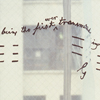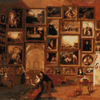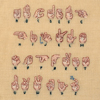Alpha Beta/After Babel 2002-03 Click on images to view project. |
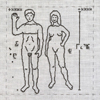 |
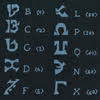 |
|||||||
Like a picture on a computer screen, an embroidered image is a collection of minute fragments (stitches) that the eye assembles into an image. Alpha Beta/After Babel is my first body of work to fully exploit computer software that can translate digital “pixelated” images of source material into gridded, color-coded charts for embroidery. The project comprises three large embroideries. One is a version of Pieter Bruegel’s painting Tower of Babel (1563). According to the book of Genesis, “The whole earth was of one language” until God arranged that men “may not understand one another’s speech.” The fall of the Tower of Babel marked the birth of the world’s countless languages, symbolically implying the impossibility of true, unimpeded communication and introducing translation as a universal mode of thought. Another of the three embroideries is based on Samuel Morse’s Gallery of the Louvre (1831–33). Morse is most famous as the inventor of the telegraph, but he was also an accomplished painter—in fact, he assembled the model for the first telegraph from leftover stretcher bars. In Gallery of the Louvre he pictured his favorite works from the Louvre’s vast collection in one imaginary gallery—a conceptual gesture prefiguring my own practice of “curating” art history. At Nicole Klagsbrun Gallery, New York, in 2004, After Babel/Alpha Beta featured a gossamer curtain with Morse’s first telegraph message—in his own binary language, Morse code—sewn into its body, hung in two panels across the gallery’s windows. In SETI, the third large-scale embroidery, an inevitably flawed attempt to communicate—to translate content from one mind into another—is taken to an otherworldly extreme. The embroidery reproduces a message sent in 1974 from the world’s largest radio telescope, in Arecibo, Puerto Rico, toward the constellation Hercules, some 25,000 light years away. A string of 1,679 bits in binary-code pictogram was assembled into a pictogram showing the numbers one to ten, the chemical formula of the DNA molecule, two human figures, a description of the solar system, and other data.
|

